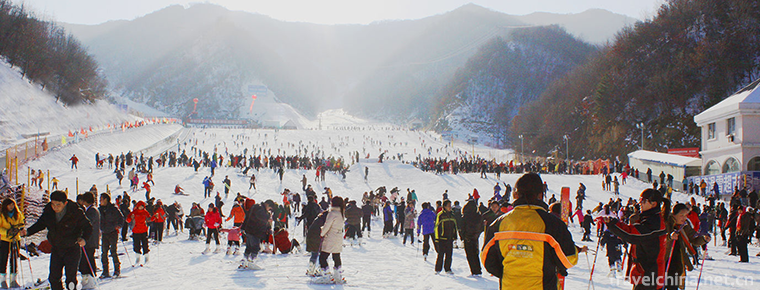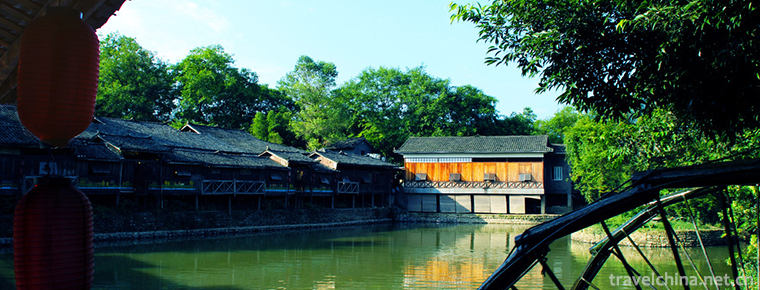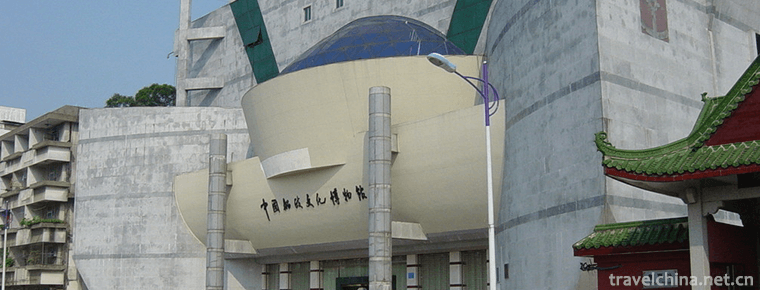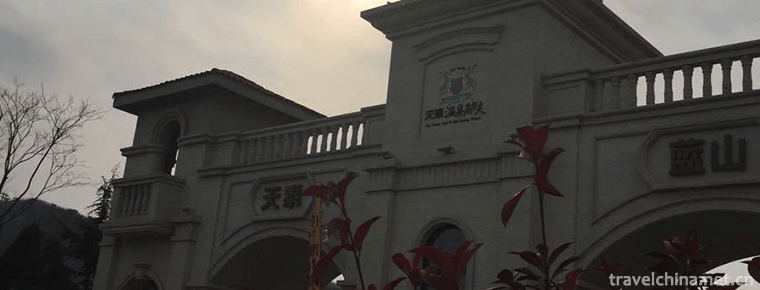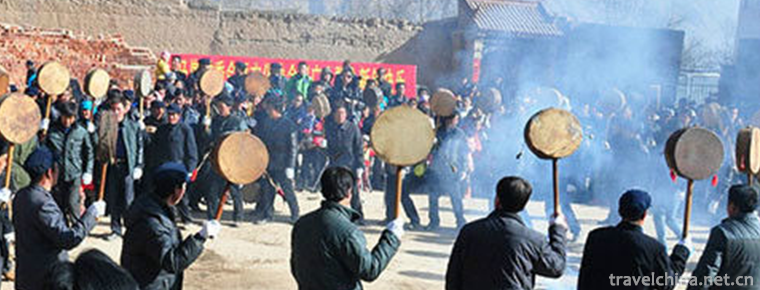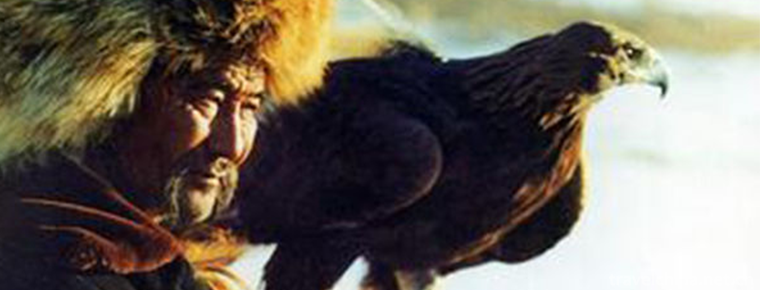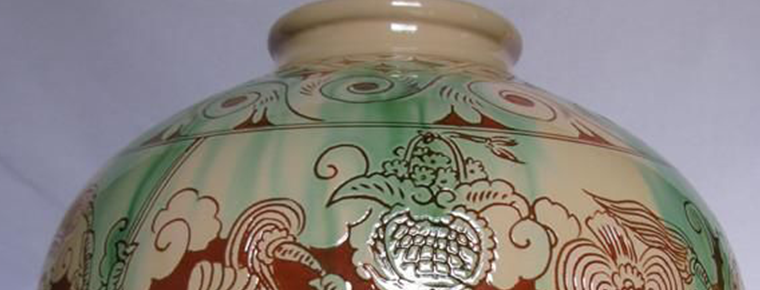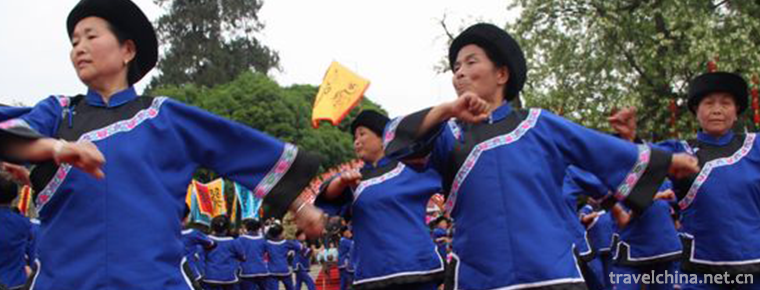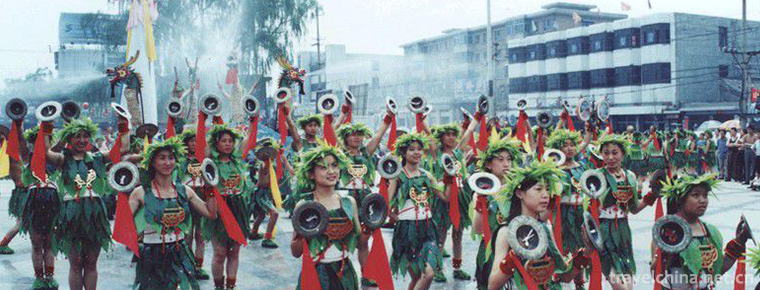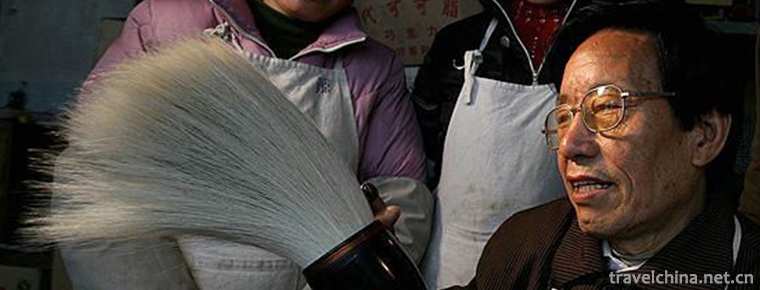Four famous Chinese embroidery
Four famous Chinese embroidery
The characteristics and artistic value of Chinese embroidery are directly reflected in the four famous embroidery.
Suzhou embroidery is famous for its fine stitches, elegant colors and fine embroidery. It has the characteristics of flat, light, even, harmonious, fine and dense. The theme is mainly about small animals. Such as "cat play", "wind through flowers", "fish and shrimp" and so on. There are similarities and differences on both sides of the embroidery. Like cat's eyes, two sides of the color is not the same, very attractive, the superb embroidery skills, is a fine embroidery.
Most of the Xiang embroidery is realistic, with bright colors. It is based on Chinese painting, with the corresponding clouds, mountains and rivers, pavilions, birds and animals, and its style is bold and unconstrained. It is characterized by embroidering tigers, lions, etc. the animal hair embroidered with unique needling method has strong roots. Xiang embroidery is known as "embroidery can produce fragrance, embroider birds can hear sound, embroider tiger can run, embroider people can convey spirit".
The composition of Shu embroidery is concise, and most of them adopt traditional ethnic patterns such as squares and stripes, which are full of decoration. It has rich and bright colors, rigorous needling, suitable for virtual and actual conditions, strong three-dimensional feeling, smooth and smooth. The embroidered objects are butterfly, carp, panda, etc.
The gold and silver embroidery thread is smooth and smooth. The composition layout is close, decorative and full of three-dimensional sense. The embroidered face is magnificent and dazzling. It is mostly used for costumes and wedding dresses. Litchi and peacock are the traditional themes of Yue embroidery.

Four famous Chinese embroidery
-
Funiu Mountain Skiing Resort
Located on the north slope of the old boundary ridge of Funiu Mountain in Luanchuan County, Luoyang Funiu Mountain Skiing Resort has the highest elevation of 2200 meters and an elevation of 1700 meter
Views: 170 Time 2018-12-22 -
Guilin Yijiang Margin Scenic Spot
Guilin Yijiang Rim Scenic Spot is situated on the northwest tour line of Guilin with long corridor. It is 32 kilometers away from the urban area (321 National Highway Lingui Wutong Town Section).
Views: 350 Time 2019-01-13 -
Mawei Shipping Museum
The Mawei Shipbuilding Cultural Heritage Group in Fuzhou is centered on the Chinese Shipbuilding Cultural Museum, including Zhongpo Battery, Zhaozhong Temple, British Consulate
Views: 242 Time 2019-02-06 -
Tiantai Hot Spring Resort
Tiantai Hot Spring Resort is located in Jimo Hot Spring Town. It has 27 holes of international championship grade Mountain Golf course. It is a large high-end rural resort centre integrating food
Views: 356 Time 2019-02-22 -
Badang dance
Badang Dance is a kind of ancient folk dance, which originated from the ancient Qiang people's "Temple Festival" in Dingxi Minxian, southeastern Gansu Province. It is also a sacrificial ritu
Views: 208 Time 2019-04-02 -
Kazakh Aytes
Kazakh Aytes is a typical representative of Kazakh folk art, a competitive form of performance, is the most abundant content of Kazakh folk oral literature, the most influential literary type among th
Views: 243 Time 2019-05-02 -
Firing Techniques of Jieshou Coloured Pottery
The firing technique of Jieshou colored pottery, the local traditional handicraft technique of Jieshou City, Anhui Province, is one of the national intangible cultural heritages.
Views: 126 Time 2019-05-06 -
Tujia Waving Dance
Hand-waving dance is an ancient traditional dance of Tujia nationality. It mainly spreads in the Youshui River and Wujiang River basin at the junction of Hubei, Hunan, Chongqing and Guizhou. It mainly
Views: 125 Time 2019-06-23 -
Wenshui Tiaozi
Wenshui Biaozi is an ancient and unique traditional folk music art spread in Wenshui County, Shanxi Province. It is named for its special copper cymbals commonly known as "Biaozi" in perform
Views: 167 Time 2019-06-29 -
Xuanbi Production Skills
Xuanbi has a long history. Originated in the Qin Dynasty, it flourished in the Tang and Song Dynasties. At the end of Song Dynasty and the beginning of Yuan Dynasty, there were frequent wars, and the
Views: 158 Time 2019-07-09 -
Panzhihua College
Panzhihua College is the only comprehensive undergraduate college in southwest Sichuan and northwest Yunnan, where the Ministry of Education locates. The school is located in Panzhihua City, a famous
Views: 273 Time 2019-08-31 -
Technical requirements of Chinese embroidery
The technical requirements of embroidery are: smooth, even, flat, even and clean. Smooth refers to straight straight straight line and smooth curve; neat refers to neat pointer trace and no uneven edge; flat refers to accurate gesture, plain
Views: 332 Time 2020-12-12
